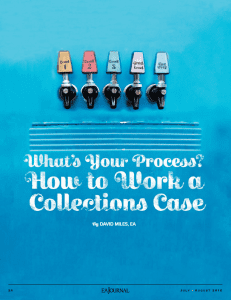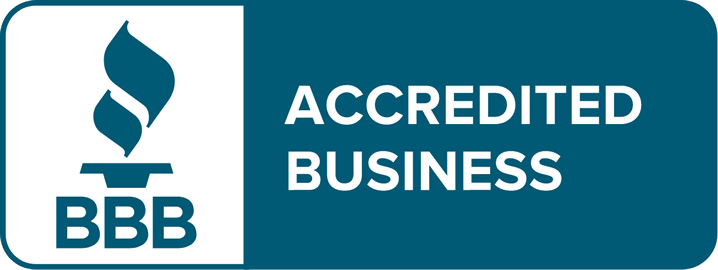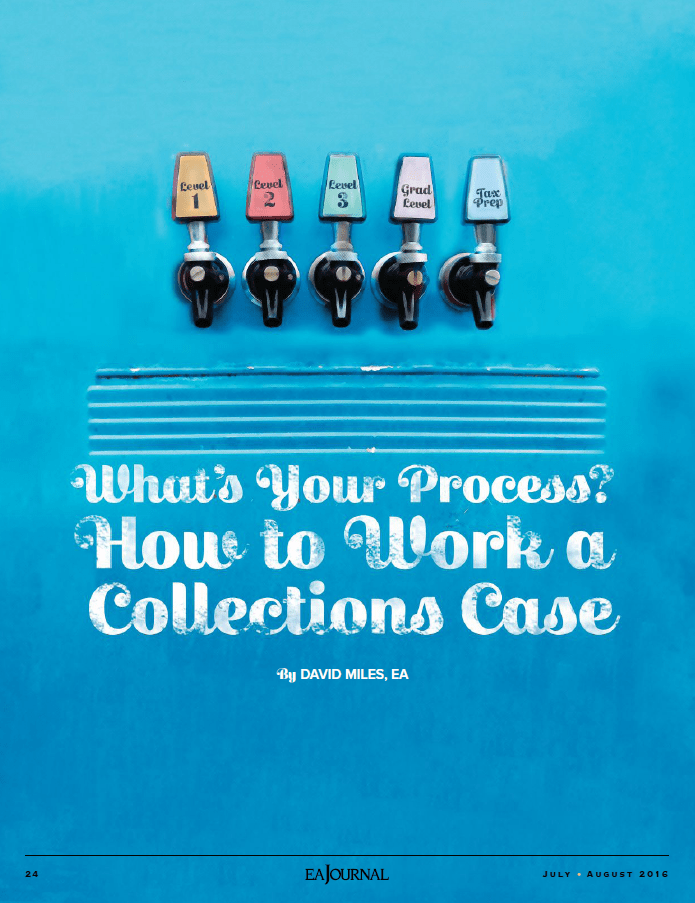When it comes to the world of tax resolution, why do you take a particular action while working a case? Is it because your client asked you to? Maybe it’s because you know it’s the ‘right’ thing to do? Or, perhaps because this is always your professional recommendation? No matter what your answer might be these are not mutually exclusive options according to 20/20 Tax Resolution’s vice president, David Miles, EA. When practicing collection representation, one needs to hone in on the balance between what gets done in every case, regardless of the circumstances, and what happens only because it’s necessary given the situation.
This foundation helped shape his most recent EA Journal article (June-August 2016 edition), What’s Your Process? How to Work a Collection Case. For the sixth year in a row, Miles has been published in The National Association of Enrolled Agents (NAEA) bi-monthly publication — this prestigious journal allows members of the NAEA to stay up-to-date on any industry trends, tax updates and association news.
 When asked to discuss the overarching theme of his piece, Miles explains, “Ultimately, a practitioner needs to be able to advise a taxpayer on what could happen and also what is most likely to happen in the course of a collection case. The practitioner then must take the taxpayer’s specific situation into account to develop a strategy that allows decisions on where and when action is necessary. An efficient tax resolution practice provides tangible results that are interpreted as success by the taxpayer.”
When asked to discuss the overarching theme of his piece, Miles explains, “Ultimately, a practitioner needs to be able to advise a taxpayer on what could happen and also what is most likely to happen in the course of a collection case. The practitioner then must take the taxpayer’s specific situation into account to develop a strategy that allows decisions on where and when action is necessary. An efficient tax resolution practice provides tangible results that are interpreted as success by the taxpayer.”
This article also served as a synopsis to a graduate level National Tax Practice Institute® (NTPI™) course that he presented during the National Association of Enrolled Agents annual conference held in Las Vegas Aug. 1-3. “I encourage those in practice to consider approaching every case, from the easiest to the more complex and the ones engaged at the first sign of a liability to those who engage you much later on, in a way that ensures the taxpayer’s interests are protected and advanced in the most capable manner possible. This session covered the process for handling a collection case from start to resolution through the aid of a specific workflow. It is my goal that each practitioner will infuse their own personality, professionalism and style into a system after having a chance to take this course,” says Miles.
Want to read the full EA Journal article? No problem, click here.



